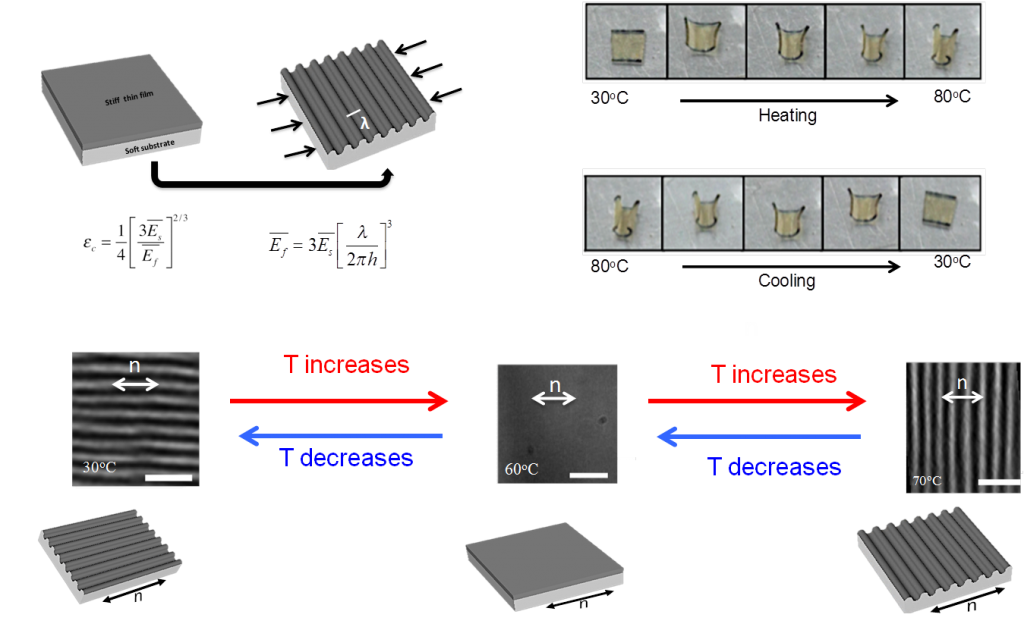Stimuli-responsive materials can potentially address the limitations of conventional devices and static materials for biomedical applications. Liquid crystal elastomers (LCE)s are stimuli-responsive polymer networks which exhibit a fully reversible and large-amplitude shape-response. Despite this, the implementation of LCEs for biomedical applications has been limited for a number of reasons: The nematic-to-isotropic (TNI) transition temperature of LCEs is typically much higher than room temperature, the shape-response of LCEs can be slow and LCEs are unresponsive to electric or magnetic fields in the pristine state.
We demonstrated that liquid crystal elastomers could be used to create surfaces with controlled wrinkling on the surface. Temperature changes gave rise to surface wrinkles at a temperature dependent on preparation conditions. The surface wrinkling instability is completely reversible, and the orientation of the wrinkles is dependent on the orientation of the LC director and the direction of temperature change (increase or decrease). However, the wrinkling instability shown above only occurs when a thin PS film ( ~ 100 micrometers or less) is deposited on top of an LCE with 1mm thickness. If the thickness of the PS film is comparable to that of the LCE, a reversible flexing transition occurs, similar to that seen in metallic bilayers.
We have created LCE nanocomposites that change shape in response to an applied external voltage. This allows us to direct the growth of cells on the LCE substrate. In recent work (currently unpublished) we have found that cardiomyocytes can grow and proliferate on an LCE surface, and stimulation of the LCE results in alignment of the myocytes on the LCE surface.
The image above presents a schematic depiction of surface wrinkling in LCE nanocomposites. The image also shows examples of cardiomyocytes on the surface of the LCE grown under static and stimulated (reversible shape change) conditions. Cells alignm along the primary direction of LCE contraction/elongation.
Publications
1. Agrawal, Adetiba, Kim, Chen, Jacot, and Verduzco. “Stimuli-Responsive Liquid Crystal Elastomers for Dynamic Cell Culture,” J. Mater. Res. 2015, 30, 453-462.
2. Agrawal, Yun, Pesek, Chapman, and Verduzco, “Shape-responsive liquid crystal elastomer bilayers,” Soft Matter. 2014 10, 1411-1415. (See news release in Rice News and Futurity.org)
3. Agrawal, Chipara, Shamoo, Patra, Ajayan, Chapman, and Verduzco. “Dynamic Self-Stiffening in Liquid Crystal Elastomers,” Nature Communications, 2013 4, 1739.
4. Agrawal, Luchette, Palffy-Muhoray, Chapman, Biswal, Verduzco, “Surface Wrinkling in Liquid Crystal Elastomers,” Soft Matter, 2012, 8, 7138-7142.


